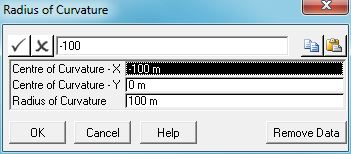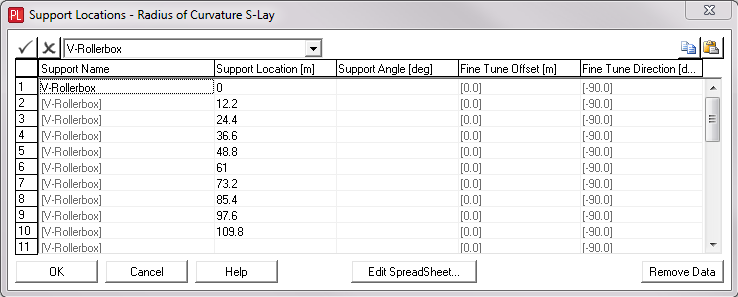You can now proceed to creating a Stinger component to model the S-lay stinger. To create a Stinger component in the Stinger folder, right-click and select New > Stinger > Stinger. Rename this component Stinger.
The options in the Type drop-down list, Rigid S-Lay, Articulated S-Lay and J-Lay are self-explanatory. For this example, you’ll use a Rigid S-Lay stinger so the default option remains unchanged.
For this type of stinger, there are three possible Configuration options – Explicitly Defined, Radius of Curvature Defined and Hinged. The first option allows you to position supports in an arbitrary manner, providing the highest level of generality. Alternatively, it may be more convenient to define support locations with respect to a radius of curvature; the second option. The final option is to specify the stinger in terms of a series of predefined Stinger Section components. Given the data for this example, the radius of curvature approach is the natural choice, so you select this option from the Configuration list.
Specify the radius of curvature, and the location of the centre of curvature, by pressing the Centre of Curvature button and entering the data outlined in Example 3 and as shown in the figure below. Note that the centre of curvature location is defined with respect to the stinger origin, which is specified on the Vessel component, and the specification here will put the top of the stinger level with the stinger origin.

Radius of Curvature Data
Back to Defining the Stinger Overview
You may now proceed to specifying the location of the rollerbox supports on the stinger. Press the Support Locations button. This displays a spreadsheet-type dialog which contains five columns – Support Name, Support Location, Support Angle, Fine Tune Offset and Fine Tune Direction. The drop-down list in the first column provides a list of all the Support components currently defined in the project. Of course, at this stage you have only one – V-Rollerbox – which you select. When subsequent supports are being added, it is not necessary to reselect V-Rollerbox every time, as it becomes the default for subsequent rows. Specify the support locations in the second column as given in Example 3. Note that these lengths are measured in a curvilinear manner from the top of the stinger, which is directly above the centre of curvature. The remaining three columns are optional and may be left blank. As the Support Angle column is left blank, the orientation of each support is aligned with a tangent vector to the stinger profile at that location. The Fine Tune Offset and Fine Tune Direction columns are intended mainly for later “tuning” of support positions and can be left blank at this stage. Once the support locations have been fully specified, the dialog will appear as shown in the figure below.

Support Locations
Back to Defining the Stinger Overview
Specification of a stinger hitch point is optional, and is only relevant if you wish to rotate the whole stinger, and all its associated supports, about the hitch point. Note that there is no stinger rotation applied in this example and you can ignore the Hitch Rotation button.
The Stinger Sections button pertains specifically to Hinged Rigid S-Lay and Articulated S-Lay stinger and is disabled in this instance. Similarly the Tower Properties button is disabled as it relates specifically to J-Lay towers.
The Component View for the completed Stinger component is shown in the figure below.

Stinger Component View
Back to Defining the Stinger Overview